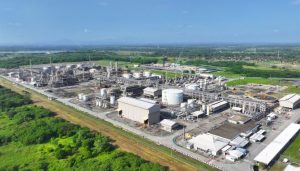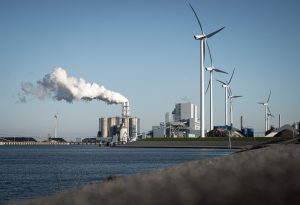
by: Lionel Leow*
The real estate sector is responsible for 40% of annual global CO2 emissions, according to a UN report. In Indonesia, this number stands at 29.1% of total-energy related carbon emissions in the country.
As the world population grows and urbanises, the number of buildings is expected to double by 2050, exacerbating the sector’s impact on climate change. This is especially so for Indonesia, whose population is expected to increase by 20%.
Buildings play an important role in our everyday lives, from homes to offices as well as schools and hospitals. Given that we spend around 90% of our lives indoors, creating the cleanest and greenest built environment is vital for fostering healthy communities.
Due to the long lifespan of buildings and infrastructure, urgent action is needed from the sector as emissions and polluting behaviours can linger, sustaining harmful impacts to the environment for decades.
Indonesia is making good progress in greening its built environment by introducing green building standards for four of its major cities, including Jakarta, with a target to decrease energy intensity of buildings by 1% per year by 2025.
However, more can be done to create a green future for the next generation.
Tackling operational emissions
According to the Climate Transparency Report, most emissions come from indirect sources such as grid electricity for air conditioning and other appliances.
Retrofitting existing buildings can value-add by improving performance efficiency while reducing energy consumption. This includes all kinds of upgrades, from simple ones such as switching to LED lighting to major changes including structural and façade alterations.
While retrofitting might be more challenging, especially for older buildings which were not designed sustainably, it is an effective strategy to limit carbon emissions from buildings, according to an IPCC report. This is because such upgrades tap the energy-saving potential of buildings to reduce their greenhouse gas emissions across their life-cycle.
Tapping innovative technologies
Increasingly, architects are adopting recycled or reclaimed materials in construction to further reduce the environmental impact of buildings.
According to a UN analysis, one of the most effective ways to reduce plastic pollution is to use fewer new products in the first place. One example of this in practice is how TA.LE, an award-winning Singaporean design and architecture firm, is exploring the use of recycled plastics as decorative wall features or wall claddings.
Such innovative solutions pave the way for a future where good design meets sustainability that not only protects the environment but is also stylish and functional.
In another upcoming development, the firm is also exploring using mass engineered timber to construct an entire development – a radical shift to a more carbon-friendly and renewable material rather than using the typical steel and concrete, which is very carbon-intense.
Incorporating nature
Biophilic design serves as an innovative architectural concept that integrates the built environment with nature.
By connecting people to nature both inside and outside of buildings, biophillic design can help reduce stress, enhance creativity and clarity of thought, improve well-being and even progress healing. In densely constructed zones, like the inner city Jakarta, biophilic design serves as a compelling solution to momentarily escape from the bustling city.
Architects could incorporate vertical greenery, green corridors and nature murals throughout offices, homes or retail spaces to provide an aesthetic advantage while cultivating a relaxing atmosphere for occupants and visitors.
The way forward
Indonesia is in a race to cut its carbon emissions. The government has set ambitious targets to reduce emission levels by 31.89% on its own or 43.2% with international support by 2030. Higher targets call for an accelerated fight against greenhouse gasses.
The buildings and construction sector is vital in strengthening Indonesia’s resilience to climate change.
Architects play an important role in advocating for more sustainable developments. They can be a positive influence by recommending certain energy-efficient retrofit and design choices that are also high-performing, accessible and safe.
Sustainable design should not be just a technical fix. If possible, it should be integrated into the project planning from day one. Through this, sustainable architectural design can be the driving force behind Indonesia’s move to a lasting and positive future.
By taking bold action on climate change collectively, we will create a more sustainable future for future generations.
*The author is the Principal Architect and Co-founder of TA.LE
Banner photo: Biophilic design by TA.LE at King’s Centre, Singapore. (RENDY ARYANTO/VVS.sg)













